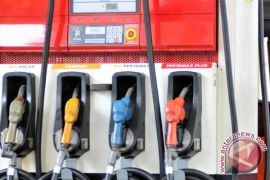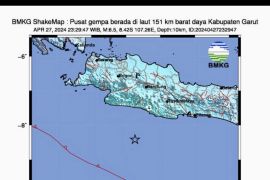The government was hoping it could implement its subsidized fuel consumption limitation policy this year.Jakarta (ANTARA News) - The Energy and Mineral Resources Ministry is preparing six options for the implementation of the government`s plan to limit subsidized fuel consumption for consideration by the cabinet, an energy official said.
"We are preparing six options but we are not sure whether all of them will be taken to a cabinet meeting for discussion before they are submitted to parliament," Oil and Gas Director General Evita Legowo said here on Monday.
She was speaking on the sidelines of a working meeting with the House of Representatives (DPR)`s Commission VI on trade, industry and state-owned firm affairs.
Evita said the government was hoping it could implement its subsidized fuel consumption limitation policy this year.
"Hopefully, the policy can be implemented this year, namely after the fasting month of Ramadhan," she said.
President Susilo Bambang Yudhoyono had earlier ordered the ESDM ministry to prepare energy saving steps, including subsidized fuel consumption so that the subsidy would not drastically increase.
Evita did not elaborate on the substance of the six options her ministry was preparing for discussion at a cabinet meeting.
It was earlier learned that the subsidized fuel consumption limitation team had prepared three options, namely increasing the price of premium gasoline to Rp5,000 per liter with a cash-back for public vehicles.
The first option was predicted to be able to save Rp7.3 trillion in state money.
Under the second option, the price of premium would not be raised but private cars would be made to use pertamax, on condition that the price of pertamax would not exceed Rp8,000 per liter. This option was expected to save the state Rp5.8 trillion.
The third option consisted of two ways. First, the price of premium would be increased to Rp5,500 per liter without allotment for private vehicles. The second was that the price of premium would remain Rp4,500 per liter with allotment for public vehicles and motorcycles using a radio frequency identification (RFID) device.(*)
Editor: Heru Purwanto
Copyright © ANTARA 2011






